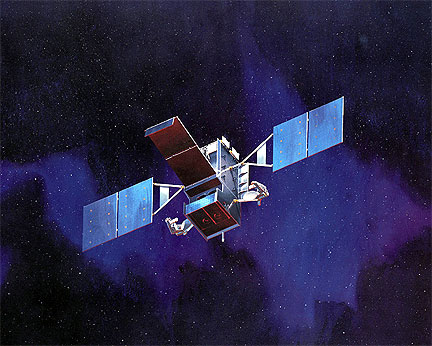
SBIRS GEO-1, artistic rendition.
The U.S. Air Force’s newest Space Based Infrared Systems GEO-1 satellite continues to make excellent progress on-orbit. Launched May 7, 2011, from Cape Canaveral Air Force Station, Fla., on a United Launch Alliance Atlas V Launch Vehicle, the spacecraft successfully completed all orbit-raising maneuvers to reach geosynchronous orbit. The spacecraft liquid apogee engine performed a series of six transfer orbit burns to place the satellite in its final orbit. In addition to orbit-raising, the test and operations team successfully deployed the satellite’s solar arrays high-gain communications antennas, as well as the light shade for the payload’s infrared sensors.
“GEO-1 early-orbit checkout activities are going well,” said Col. Mike Noble, deputy director of SMC’s Infrared Space Systems Directorate. “We continue to make solid progress in making this new persistent infrared surveillance capability available to the nation. The Air Force is a step closer to making this new persistent infrared surveillance capability available to the nation, our warfighters and allies. We could not have accomplished this success without the hard work and dedication of the entire team.”
The test team continues to perform additional spacecraft checkout and infrared payload tests to validate and characterize the system’s performance. “We are extremely proud to deliver SBIRS GEO-1 to the U.S. Air Force,” said Dave Sheridan, Lockheed Martin’s SBIRS deputy program director. “The team has performed exceptionally well and we eagerly await payload initialization. GEO-1 will be a tremendous asset to our nation’s defense.” Once checkouts are complete, the SBIRS GEO-1 satellite will enter a certification process during which the Air Force will evaluate GEO-1 performance in the operational environment. This will culminate with Air Force Space Command’s Operational Acceptance and the United States Strategic Command’s certification of the proven SBIRS GEO system. The SBIRS System provides four mission areas: Missile Warning, Missile Defense, Battlespace Awareness and Technical Intelligence. SBIRS GEO satellites are built by prime contractor Lockheed Martin Space Systems Company of Sunnyvale, California.

